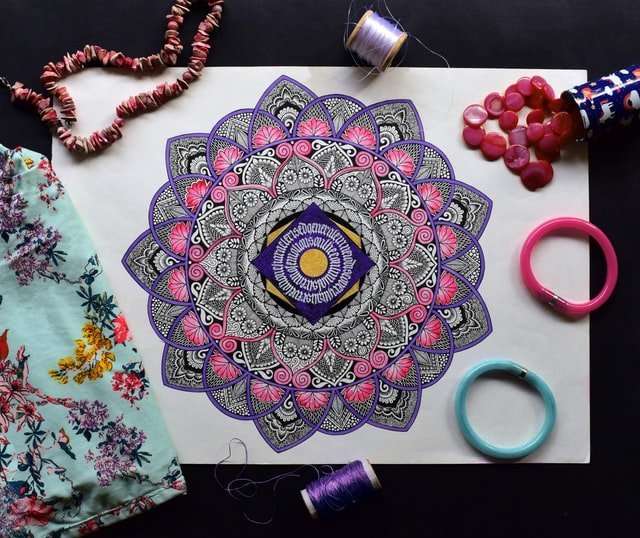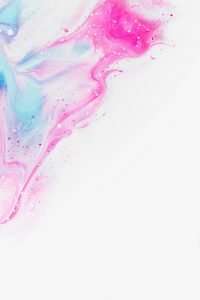Vector art is a graphic design technique that involves the use of mathematical forms such as lines, curves, angles, and shapes. Vector art can be scaled to any size without losing its quality. This is because vector art is composed of mathematical calculations describing the images.
And if you’re going to create vector art, you should know what tools are available to you. It’s not enough to just know how to use your favorite vector software because there are many different ways for creating vector art.
In this article we’ll discuss 12 different ways you can create vector art. These include scanning in line drawings and photographs, creating your own brushes from scratch, using existing digital images and recreating them into vector format, as well as several more specific techniques commonly used by designers around the world.
Creating Vector Art is fun, simple and rewarding. The best part is that once you know how to create vector art, you will never have to purchase it again. This guide will teach you all the basics in creating vector art. By following these 12 steps, you will be able to create your own vector art in no time at all.
Step 1: Learn Your Vector Editing Software
Vector editing software packages are available for free or very cheap. You should download one of these programs before attempting to achieve anything on this list. Free vector editing software includes Inkscape and CorelDRAW
Step 2: Download a Free Vector Pack
There are many free vector packs that you can download off the internet. One of the best is the Open Clip Art Library Vector Pack . It contains tons of vectors that are free for commercial use and even comes with an installer program interface that makes installing the vectors a breeze.
TIP: Use Google Image Search to find more free vector packs on the internet.
Step 3: Learn about Shapes, Lines, Curves and Colors
This is where things start to get a little bit complicated, but don’t worry! It’s all worth it in the end. Shapes, lines and colors can be used together or alone in
The following are all different ways to create vector art.
1. Affinity Designer
2. GIMP
3. Inkscape
4. Illustrator
5. Adobe Photoshop CS6
6. Affinity Photo
7. Krita
8. Sketchbook Pro
9. CorelDraw X8
10. AutoCad 2014 and newer versions
11. Flash CS5 and newer versions by using the trace function and converting it to pixel art or vector art, or use a 3D modelling program to convert it into a 3D object that you can manipulate in Flash CS5 and newer versions of Flash (such as 3ds Max, Maya, Blender, Modo etc.)
12. Macromedia Freehand 11 or newer versions
Vector art is the process of taking a photograph and converting it into art that can be scaled perfectly to any size. You will find free vector art backgrounds on GraphicsFuel.
Descriptions and Instructions:
The first step is to use a good graphics program or software. I personally use Gimp, but you can also use Photoshop, or any other graphics software that allows you to create vector art. Once you have your software open, you need to select the “Paths” option from the pull down menu under “Layers.” When you have selected this option, click on the button that says “Make Work Path” and then click on OK. The next step is to select the Brush Tool and make sure that the color is set to white. Then start drawing over your image using the paths tool. After you have drawn over your image with the paths tool, you should now click on the button that says “Fill with BG Color.” This will give your image a black background, as seen in my example below. The next step is to go back into your layers menu, and change how it looks by clicking on “Layer.” After changing how it looks (should look like Layer 1) go back up and find another layer titled “Layer 1” and double click
The problem with creating vector art is that it is actually quite difficult to do. There are many different ways of creating vector art and most of them are very hard to master.
The best way to start out when you want to create vector art is to find a tutorial on the Internet that will show you how to do so. Once you have finished the tutorial, you can get started making your own vector art.
Vector art is a technical term for computer graphics created by mathematical formulas instead of raster graphics which are created by scanning and digitizing images. The different between the two is that in vector graphics, objects are composed of paths and lines that are rendered as mathematical equations instead of pixels.
Tutorials for learning how to vector art can be found on the internet. Vector art is considered as an easier way to create logos and graphics because it only requires the use of software like Adobe Illustrator and Corel Draw.
Vector art is a very popular in logo design, especially in business card design because of its clean lines and ability to scale without losing resolution.
Vector art is a bit of a misnomer. It’s not really art at all. It is art that has been broken down into mathematical equations, so that it can be scaled and colored infinitely without loss of resolution or quality. The term vector was chosen because the images created are based on vectors, or lines and points.
Trying to create vector art by hand would be nearly impossible. To create vector art you have to use special computer software that has been designed for the task.
Vector art is different from raster graphics in that you can change it at any time without losing quality or detail. This makes it an ideal choice for logos, signs, and other printable designs that need to be changed regularly. It also means that you will always get high quality prints of your artwork when you use a professional vector illustration program like Illustrator or Corel Draw.
As well as being infinitely scalable, vector art can be made to look however you want with just a few clicks of the mouse. This means that you will never have to worry about how your artwork will appear when printed since it won’t lose any quality during the printing process.
Vector art has become even more popular in recent years thanks to the advent of modern technology such as Flash and SVG (



